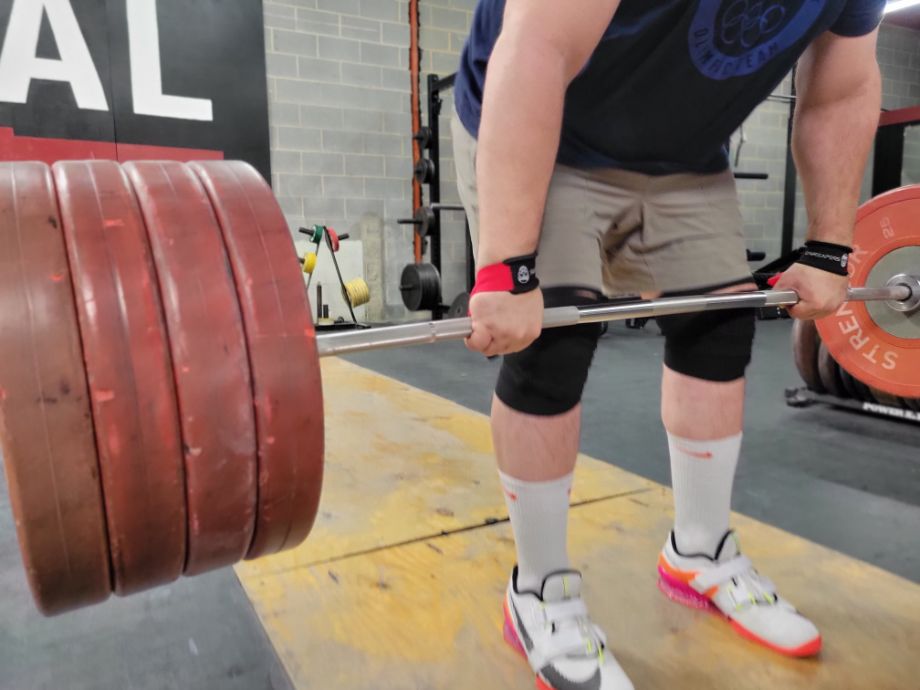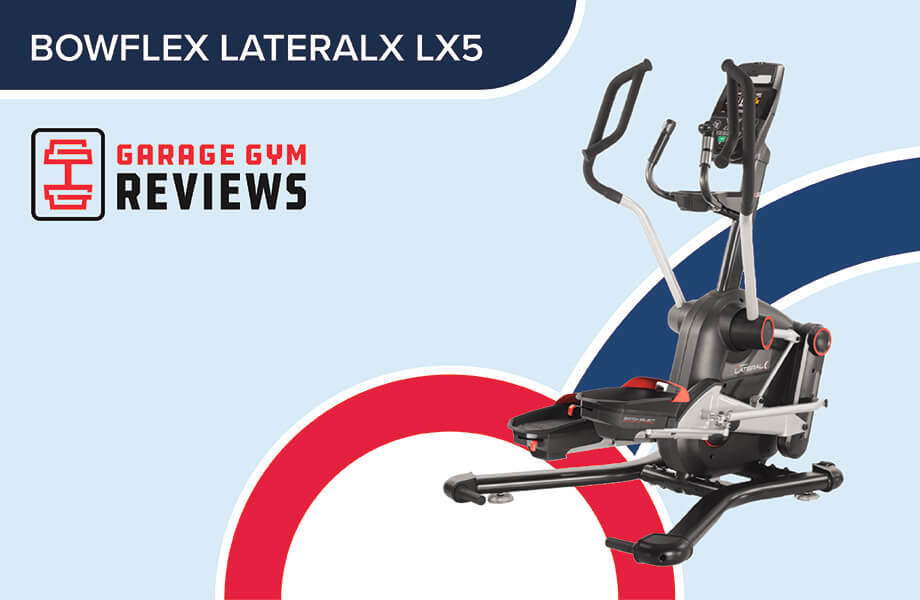Are you looking to hit new PRs on your compound exercises?
Maybe you’ve been training for a while and you just can’t get past a certain point. Or maybe, you’re new to training but you fully understand why compound exercises are important (hint: they’re more efficient for improving muscle strength and maximal oxygen consumption1 compared to single-joint exercises).
Today, I’ve got something special in store for you. A program created by a legend—elite lifter Jim Wendler—made for legends, the 5/3/1 workout. “This program has been around since 2009, and it’s stood the test of time because it works,” says Kate Meier, CPT, USAW-L1, CF-L1, and GGR Head of Content. Following it can help build strength and size, as well as break through lifting plateaus.
I’ll explain what the program involves, how to work out what weights to lift, what you need to do in order to progress, and of course, my certified personal trainer (CPT) tips on how to make the most out of this workout.
What is the 5/3/1 Workout Program?
The 5/3/1 workout program was created by elite lifter and coach Jim Wendler. He’s a big deal in powerlifting because he’s hit a 1000-pound squat for one rep. Yep, 1000! The reason he created the program? Simple. He wants people to set personal records (PRs) on compound lifts by starting light and learning how to do the movement with proper form to progress.
Sound good? Then, let’s get into the workout. You’ll need to be able to train either three or four times a week. Four is better than three because four lifts make up the routine: the barbell squat, barbell bench press, barbell deadlift, and barbell overhead press.
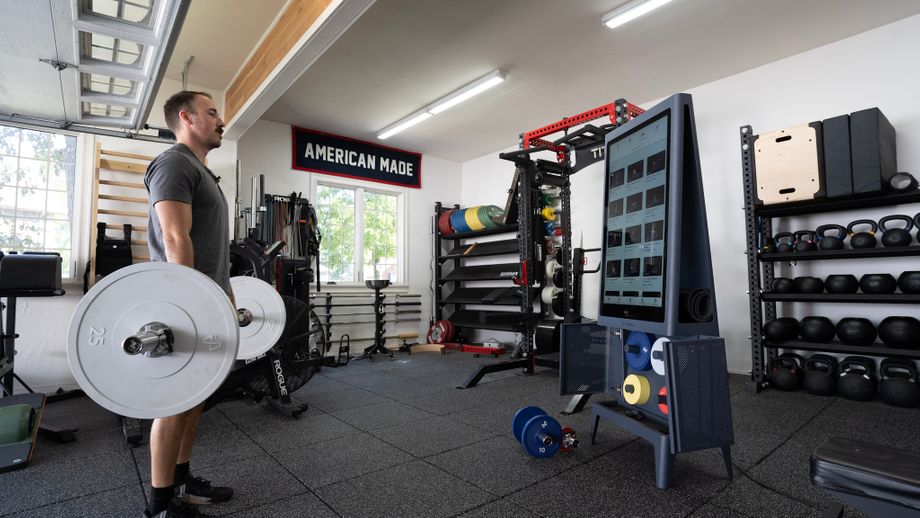
RELATED: Deadlift Muscles Worked
For every 5/3/1 workout, you’ll choose one of the four exercises as your main lift and keep alternating them. You’ll also do some assistance work (more on this later!). Over a four-week cycle (five weeks if training three times per week), the goal is to do the following rep scheme for each lift:
- Week 1: 3 sets of 5 reps
- Week 2: 3 sets of 3 reps
- Week 3: 3 sets of 5, 3, 1 reps
- Week 4: 3 sets of 5 reps (deload week)
The only exception is the third set, where it’ll be AMRAP (as many reps as possible). Once the four weeks are over, repeat the cycle. But this time, with more weight. Don’t worry; I’ll explain how to progress with the 5/3/1 workout shortly.
RELATED: AMRAP Workouts
What Weight Should I Lift With the 5/3/1 Workout?
You’re probably wondering, “But what weight should I lift when doing this?” You don’t just turn up to the gym and guess. There’s a method to this madness. See below:
| Week 1 | Week 2 | Week 3 | Week 4 | |
| First set | 65% X 5 | 70% X 3 | 75% X 5 | 40% X 5 |
| Second set | 75% X 5 | 80% X 3 | 85% X 3 | 50% X 5 |
| Third set | 85% X 5+ | 90% X 3+ | 95% X 1+ | 60% X 5 |
I know this won’t make much sense right now, but bear with me. First, you’ll need to know your one-rep max for each of the four core lifts.
To get this, you can, of course, physically test your one-rep max (1RM). On the deadlift, this is straightforward—you can either lift it or you can’t. But on movements like the bench press or overhead press, you may not feel as safe. Instead, use a one-rep max calculator2 based on the maximum weight you can lift for three or five reps. Kate Meier, CPT, USAW-L1, CF-L1, adds, “If you’re unsure of your one-rep max, start lighter with the 5/3/1 workout plan.”
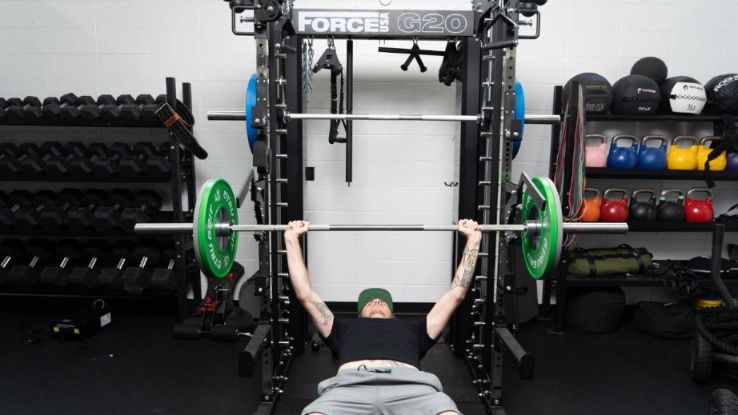
RELATED: The Almighty Bench Press
Now that you have your one-rep max calculated, work out 90% of it as your starting point. Let’s give an example using the deadlift. Say that you’ve worked out your one-rep max is 220 pounds. Calculating 90% of this gives you 198 pounds, which can be rounded to 200 pounds to make it easier.
Plug 200 pounds into the above table to determine the weights to lift. In week one, you’ll do 130 pounds for five reps (65%), then 150 pounds for five reps (75%), then 170 pounds for five + reps (85%). In week two, you’ll do 140 pounds for three reps (70%), 160 pounds for three reps (80%), then 180 pounds for three + reps (90%). And so on…
How to Progress With the 5/3/1 Workout
To progress your strength training journey using the 5/3/1 workout program, it’s simple. Once the first four-week cycle is over (after the deload week), recalculate all your weights based on your new one-rep max.
Your new one-rep max should be about 10 pounds higher for the squat and deadlift. The bench press and overhead press will be five pounds more. With our deadlift example above, your new one-rep max is 220 + 10 = 230 pounds, and 90% of this is 207 pounds (rounded up to 210 pounds to make it easier). Work out the new weights based on the percentages in the table, and you’re good to go.
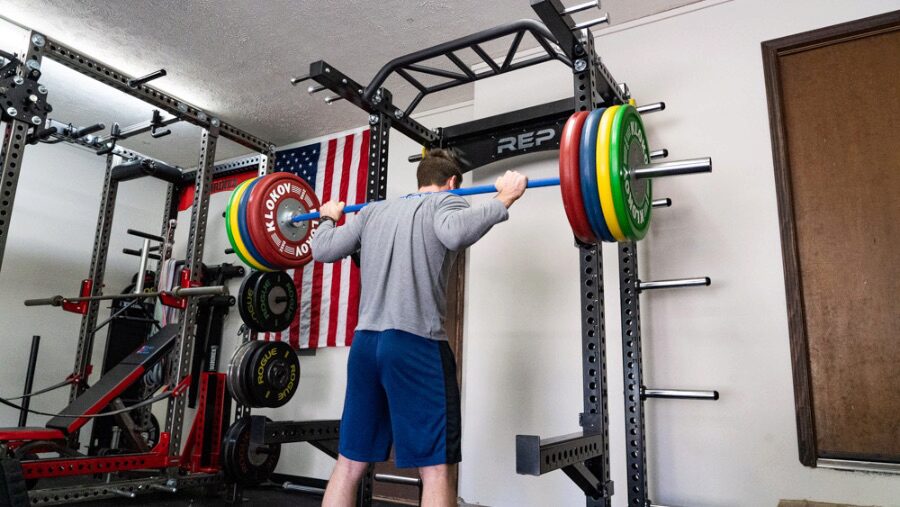
“The whole point of this strength training program is to lift heavier weights each cycle,” says Kate Meier, CPT, USAW-L1, CF-L1. When the second four weeks are up, increase your one-rep max again. Continue doing this to keep progressing. Pretty soon, you, too, will be hitting that 1000-pound squat…Okay, we can’t all be as strong as Jim Wendler!
RELATED: Best Lifting Straps
Tips for the 5/3/1 Workout
Pay close attention to make the most out of the Wendler 5/3/1 program. I’ve done the workout myself. Here are some tips so you don’t make the same mistakes I did:
Follow the Rules
The rules are the rules. I didn’t make them. If you’re going to follow the 5/3/1 program, follow it properly and make steady progress. Don’t try to add more sets or reps because the workout is too easy. At the start, it might be. That’s the whole point of adding five or 10 pounds every training cycle to each lift, but it’s not going to stay easy for long. Trust me on this.
Incorporate Assistance Exercises
As I mentioned above, aside from the core lifts, you can add some assistance exercises to help with muscular hypertrophy. I say can, because you don’t have to. Most people choose to, though. Pick a couple of exercises and do three to five sets of each after your main lift.

“Exercises such as chin-ups, pull-ups, dips, lunges, dumbbell chest presses, leg raises, dumbbell rows, and leg presses work well for accessory lifts,” adds Kate Meier, CPT, USAW-L1, CF-L1, and GGR Head of Content. Don’t overthink it, but also don’t go crazy. The focus should always be on the main lift.
RELATED: Dips Vs Pull-Ups
Eat More Protein
To get big, you need to eat big. This means getting enough protein. Cells in your body are constantly being broken down when you’re weightlifting. To repair and replace them and build muscle, protein is key. Protein requirements by age vary, but 1.2 to 1.7 grams of protein per kilogram of body weight per day is a good guideline for those following the 5/3/1 workout.
RELATED: How to Get More Protein
Sleep
A 2018 review in the Journal of Science and Medicine in Sport3 found that your maximal muscle strength in compound movements may be impaired without enough sleep. There’s nothing worse than going to the gym and feeling like you don’t want to be there. Try to get to bed early every night and wind down properly before bed (Yes, this means no social media!).
Kate says, “If you have an extremely bad sleep and you’re feeling tired, consider pushing your workout to the following day.” Alternatively, have some coffee or a pre-workout.
5/3/1 Workout Benefits
Why even do the 5/3/1 workout? Below are the top four benefits:
Increases Muscle Mass
For muscle mass, compound lifts are superior to isolation exercises. In a 2020 study4 comparing the barbell bench press to the dumbbell fly, there was higher muscle activation in the whole movement and the majority of the lifting phases for the pectoralis major, deltoid anterior, and triceps brachii with the bench press. The 5/3/1 workout is centered around compound lifts.
Improves Strength
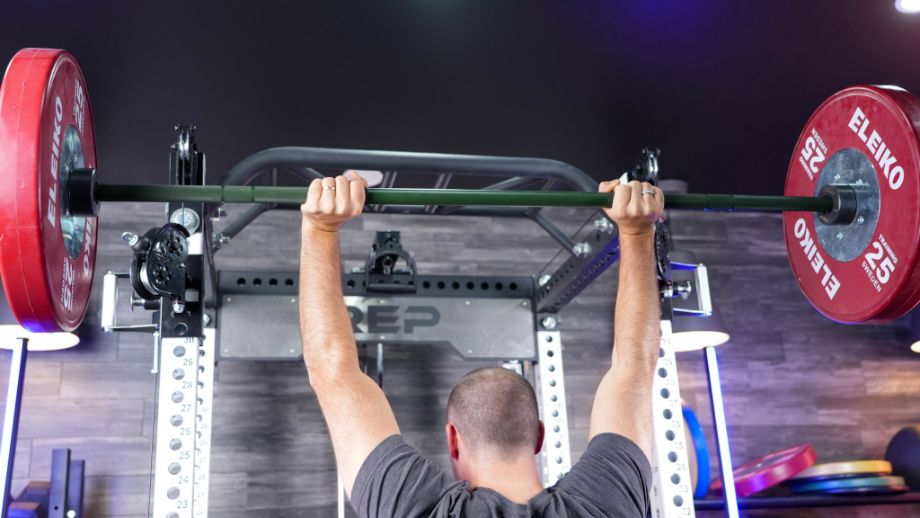
There’s no better way to get strength gains than focusing on core bodybuilding lifts and giving your body enough time to recover after each session. The 5/3/1 workout is relatively short (you don’t need to spend hours in the gym), but effective. “Every four weeks, you’re forced to increase your weights, so you’ll get stronger very quickly,” says Kate Meier, CPT, USAW-L1, CF-L1.
Boring but Big
I agree that the workout isn’t the most riveting. But do you want to be entertained, or do you want to get bigger? I know what I want…to get big! Unlike other programs you won’t train for hours on end but do your full-body lifts and get on with your life. Soon, you’ll be hitting a military press or squatting at a weight others can only dream of and getting the strength and size gains that go with it.
RELATED: Best Mass Gainer
Helps Break Training Plateaus
Because you start lighter (at 90% of your one-rep max and not 100%), and have deloads incorporated into your plan every four weeks, the workout can help people to break plateaus on compound lifts. Yes, you may have to take a step or two backward in order to progress, but the long-term benefits are worth it.
Is the 5/3/1 Workout Good for Beginners?
This is a great question but with a complicated answer: yes and no.
On the one hand, yes, 5/3/1 is a good workout for beginners because it focuses on learning and getting stronger at compound exercises. There are several benefits to lifting heavy on the core lifts, including size and strength gains. Once you get used to it, it’s easy to follow, time-efficient, and speaking from personal experience, it works. Over time, you’ll be able to see the results.
However, it can also be argued that 5/3/1 isn’t a good workout for a complete beginner. Some would say it’s more suited to intermediate and advanced lifters because beginners can usually progress faster than the five or 10-pound increment every four weeks in the 5/3/1 workout. Likely, beginners won’t know their one-rep maxes either, and some may find it boring.
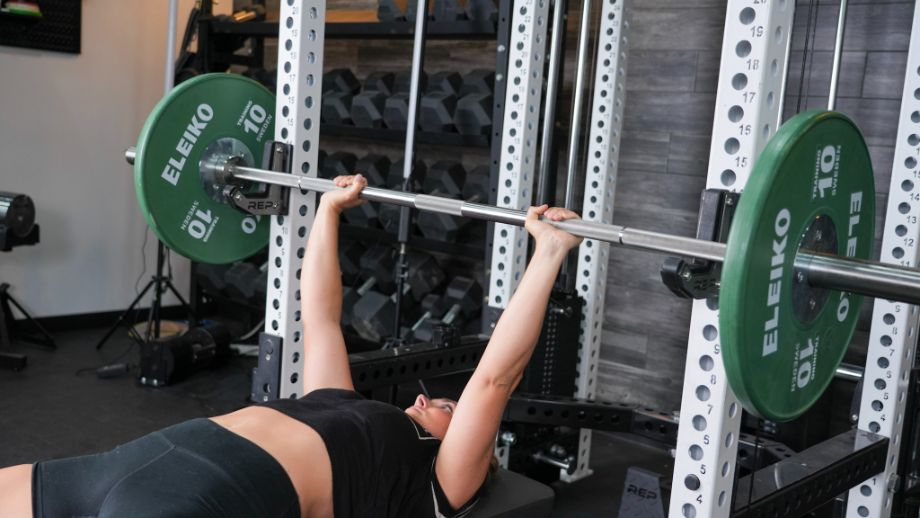
Kate says, “If you’re looking for an alternative program to the 5/3/1 workout, take a look at the 5×5 workout because it allows you to progress on each exercise and every workout.” At the end of the day, every individual is different. Some beginners may love it, some may hate it, and some may be indifferent. You don’t know until you try.
5/3/1 Workout: Final Thoughts
The 5/3/1 workout is a legendary powerlifting program for a reason—it works. Benefits include increased strength, more muscle mass, and breaking through plateaus.
Here are a few key items to remember when trying this workout:
- Warm-up. Before you start any weightlifting program—including the 5/3/1 workout—make sure to warm up properly. Get started with some cardio or sprints, and then perform dynamic stretches.
- Be realistic. If you’re not going to be realistic about your starting weight, the program won’t work for you. If anything, start on the lighter side. It’s a marathon, not a sprint.
- Deload properly. When you’re lifting heavy, it can be demotivating to drop the weight and deload. But, your body needs a break. Ride it out and go strong the following week.
5/3/1 Workout FAQs
What is the 5/3/1 workout formula?
The 5/3/1 workout formula—as popularized by Jim Wendler—is straightforward. In week one, you’ll do three sets of five reps, week two is three sets of three reps, and week three is three sets altogether. The first is five reps, the second is three reps, and the third is one rep. “The goal is to set records, whether that’s improving your one-rep max or increasing the number of reps on a specific weight,” Kate Meier, CPT, USAW-L1, CF-L1, and GGR Head of Content says.
Can you build muscle with 5/3/1?
You can build muscle with 5/3/1. Doing compound lower and upper body lifts helps with this, but the great thing about the 5/3/1 workout is that you’re in control of the assistance exercises. If hypertrophy is your goal, do a couple more exercises. There are also specific variations of the 5/3/1 workout designed for building muscle, such as the 5/3/1 “Boring But Big” program.
What is the 5/3/1 BBB workout plan?
The 5/3/1 BBB program, or the 5/3/1 Boring But Big program, is one that focuses on muscular hypertrophy. You do your core lift as you would in the 5/3/1 workout, then do five sets of 10 reps on the same exercise. After this, you can do additional accessory exercises, which you also do for five sets of 10 reps.
For example, let’s say it’s week two on the bench press. You do three sets of three reps at 70%, 80%, and 90% of your one-rep max. Then, reduce the weight and do five sets of 10 reps on the bench press, and then maybe a back or core exercise for five sets of 10 reps.
Is 5/3/1 a good workout?
Speaking from experience, yes, the 5/3/1 program is a good workout. It helped me break through multiple plateaus in my compound lifts and, as a result, get stronger. I also enjoyed that it’s quick to do, even when you have long rest periods. It does feel regimented at times, though, so it depends if you like that kind of thing (at the time, I did!).
References
- Paoli A, Gentil P, Moro T, Marcolin G, Bianco A.Resistance Training with Single vs. Multi-joint Exercises at Equal Total Load Volume: Effects on Body Composition, Cardiorespiratory Fitness, and Muscle Strength. Front Physiol. 2017 Dec 22;8:1105. doi: 10.3389/fphys.2017.01105. PMID: 29312007; PMCID: PMC5744434.
- One Rep Max (1RM) Calculator . NASM. (n.d.). https://www.nasm.org/resources/one-rep-max-calculator
- Knowles OE, Drinkwater EJ, Urwin CS, Lamon S, Aisbett B. Inadequate sleep and muscle strength: Implications for resistance training. J Sci Med Sport. 2018 Sep;21(9):959-968. doi: 10.1016/j.jsams.2018.01.012. Epub 2018 Feb 2. PMID: 29422383.
- Solstad TE, Andersen V, Shaw M, Hoel EM, Vonheim A, Saeterbakken AH.A Comparison of Muscle Activation between Barbell Bench Press and Dumbbell Flyes in Resistance-Trained Males. J Sports Sci Med. 2020 Nov 19;19(4):645-651. PMID: 33239937; PMCID: PMC7675616.


